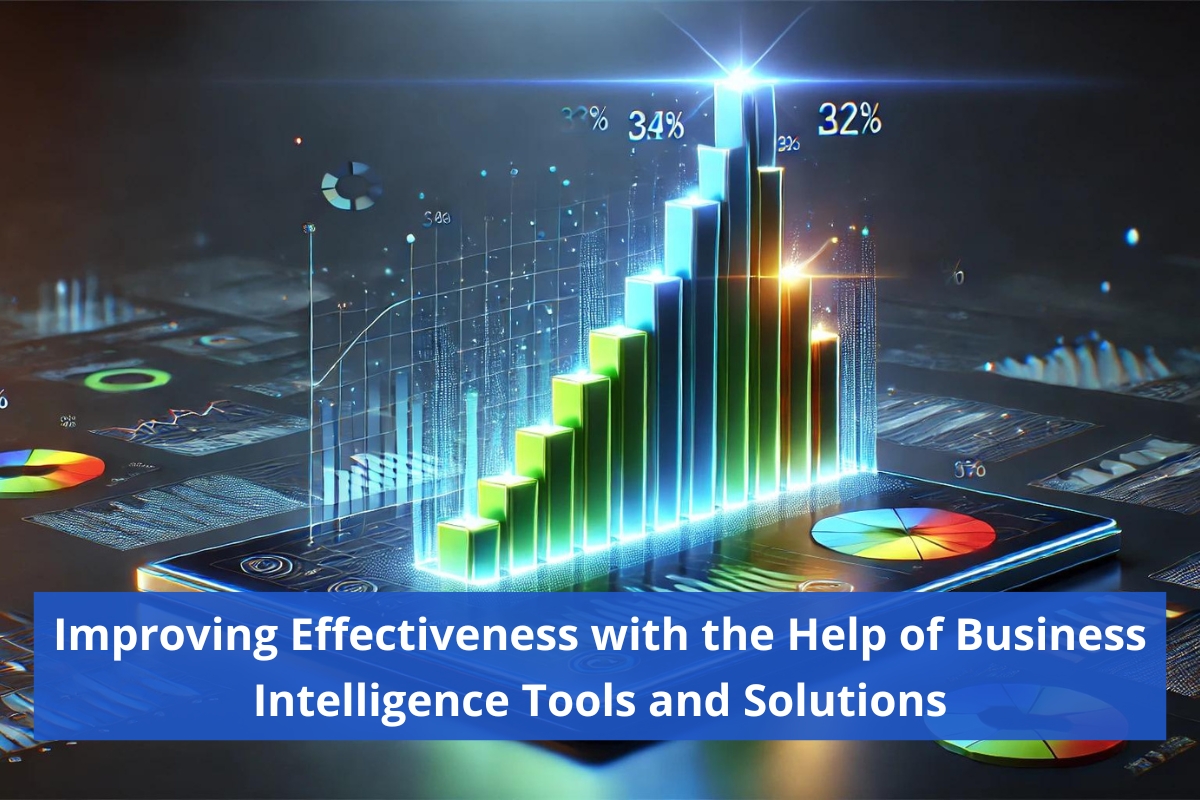Business Intelligence (BI) tools and solutions won’t let any organization sleep on their laurels, as they provide performance-enhancing efficiency, and help adapt to the changing business environment. A cost-effective approach, as rendering this strategy on these tools and solutions aids organizations in accomplishing endpoints like strategic cost, increased productivity, Making better managerial choices, and enhanced customer satisfaction. All those objectives will be achieved with the help of possible predictive analytics powered by Business Intelligence (BI) which include Artificial Intelligence (AI).
Evaluating Activities with BI
BI can be employed by companies to evaluate how their activities are performed and how better decisions may be taken. How to enhance the activities of the organization with the use of BI is possible through various BI tools and solutions. Such tools and solutions support several processes and systems throughout the organization, including customer relations, marketing, human resources, production, and social marketing. They are scalable as per the requirement of every organization.
Data-Driven Analysis and Trends
Data-driven analysis is the goal of BI tools and solutions, the application of which assists in closing performance gaps, improving performance, or providing guidance on new trends or areas worth pursuit. Trends can also be determined using data analytic tools and solutions whereby assessing a certain market, determining targeted customers, marketing campaign’s performance, and customer habits can be assessed. It is possible to control the goals, assess ROI, and determine customer satisfaction with these tools and solutions.
Predictive Modelling in Decision Making
Integrated predictive modelling may also be utilized by organizations in the course of decision making. Also, predictive modelling predicts risks and suggests how those risks can be averted effectively. This is important as it enables organizations to be more proactive, by changing the things that are likely to change. Customer targeting and focusing on specific market conditions trends can also be enhanced by means of predictive modeling.
AI for Routine Activities
Companies can use AI for other routine activities, which ought to be done manually and decrease the physical workload, thereby allowing for gradual internal processes re-engineering. This would lead to enhanced productivity and optimizations of costs as well as exceed customer satisfaction. AI can as well be aimed at improving content and information to create an appeal to customers that have more value and are more accurate.
Machine Learning for Operational Insights
Organizations can also leverage Machine Learning (ML) technology to have a more complete view of their operations. The aforementioned algorithms can evaluate and merge information from multiple angles which assists an organization in understanding its operations better. Companies can take advantage of ML in providing complex analytics, spotting possible prospects, and improving processes.
Improving SEO with Natural Language Processing (NLP)
Firms can apply modern machine learning tools, such as, for example, natural language processing, to improve the quality of seo campaigns run by their websites. Using NLP can help return accurate search results and thus help to elevate a company in a search engine ranking. In addition, NLP can be utilized to create content that is customized for the users of the site which can help increase the interaction between the organization and customers.
Real-Time Monitoring with Dashboards
They can, for instance, be used in monitoring the performance of the organizations. Dashboards have the ability to be modified so that the relevant and available stakeholders are kept updated at all times. Additionally, dashboards can give access to the established data within the organization and this makes stakeholders appreciate the performance of the business at a more detailed level. They take out great risks in decision making and enhance performance because they make and implement decisions fast.
BI for Storing and Sorting Data
Organizations can also utilize BI systems in the making and storage of dashboards. It is possible to generate insights from the performance data for executives, sales teams, and other personnel. Organizations my use BI systems to store, sort and analyze information. This information positon can be used to analyze performance, locate gaps and implement solutions if and when necessary.
Customer-Centric Solutions with BI
Organizations can similarly apply BI in helping them provide solutions for customers. This can help organizations to create better products, offers, and services. Companies may apply pills to investigate customers purchasing processes and market specific products that will enhance their experiences. This can lead to increased customer retention and loyalty and consequently increased sales.
Financial Analysis and Reporting
Organizations can take advantage of BI tools and techniques to enhance their profitability. Organizations with BI systems can build any form of financial undertakings analytical screen interfaces that report on the financial performance with greater frequent. Assessing their financial performance is realtime and hence financial performance rhythm can be gauged within very short periods. This may actually give organizations wider financial operation knowledge that enables them to make sound decisions and take corrective measures where necessary.
Budgeting and Forecasting
Organizations can also make use of BI for the purposes of budgeting and forecasting. Real time reporting and continued insights can help BP process be more effective and lean. This can assist members to formulate operational and strategic plans in line with those of the organization.
BI in Production Processes
BI tools and solutions may serve to optimize the production processes in organizations. As part of production processes, business intelligence can also provide real-time analysis enabling decision managers to improve business processes. This may include effective analytical approaches coupled with predictive modeling techniques. Using predictive modeling methods in business, shortcomings can be addressed and effective systems in the market created within the lapse of time.
BI in Supply Chain Management
The organisations can also apply BI in supply chain management. In this case, the implications are discovering wasteful processes within the supply chain, projecting future sales, and deciding upon the amount of stocks and purchases. BI tools and solutions can also be positioned into properly managing the warehouse, including monitoring logistics, managing inventory levels, and tracking supplier performance as well as lead times. As a result, it enables organizations to increase their operational effectiveness and enhance customer satisfaction.
Marketing and Advertising Effectiveness with BI
Organizations can adopt the use of BI to improve their marketing and advertising effectiveness. BI can be utilized in the determination of the prospective markets and customers, in addition to the evaluation of the effectiveness of the marketing strategies. This would make it possible for the organizations to carry out real time modification of their methods and organizations strategies to the trend and hence maximises the return on investment. Again, BI is useful in outlining consumers’ purchasing styles in different segments, making it possible for better marketing targeting by the firms.
Customer Service Enhancement through BI
BI is useful for organizations in the analysis and enhancement of the customer service. BI can shed light on the content of customers’ needs and feedback allowing for the development of possible solutions aimed at resolving the identified issues. This can allow companies to formulate better strategies for customer service and response to the customers efficiently. With the use of predictive analytics in BI, organizations will be able to provide the right services that customers will need and at the right time.
Measuring Customer Satisfaction with Dashboards
To measure the customer service quality more effectively, the organizations can use dashboards. By using dashboards, it is possible to measure how satisfied customers are and where there may be problems or areas that can be improved. It can enhance organizations by improving customer service and attracting clients’ retention.
Predictive Analysis of Customer Behavior
BI can also be helpful in markets to analyze customers’ future actions. Predictive analysis categorizes customers and informs about prospect purchasing behavior. This helps in advancing customers by targeting them with well-crafted proposals that aim at boosting their satisfaction levels thereby enhancing their treasured loyalty.
Strategic Development with Data-Driven Insights
Lastly, BI can be used in the organization to come up with strategies that are supported by the data. Information about the past performance of the particular organization can help in forecasting future performance and spotting areas that need improvement. Data-driven solutions are what can be created by using the business insights technology that may best fit the organizations. This may enable bettering of the organization’s performance and increasing the managerial and customer interactions further.



